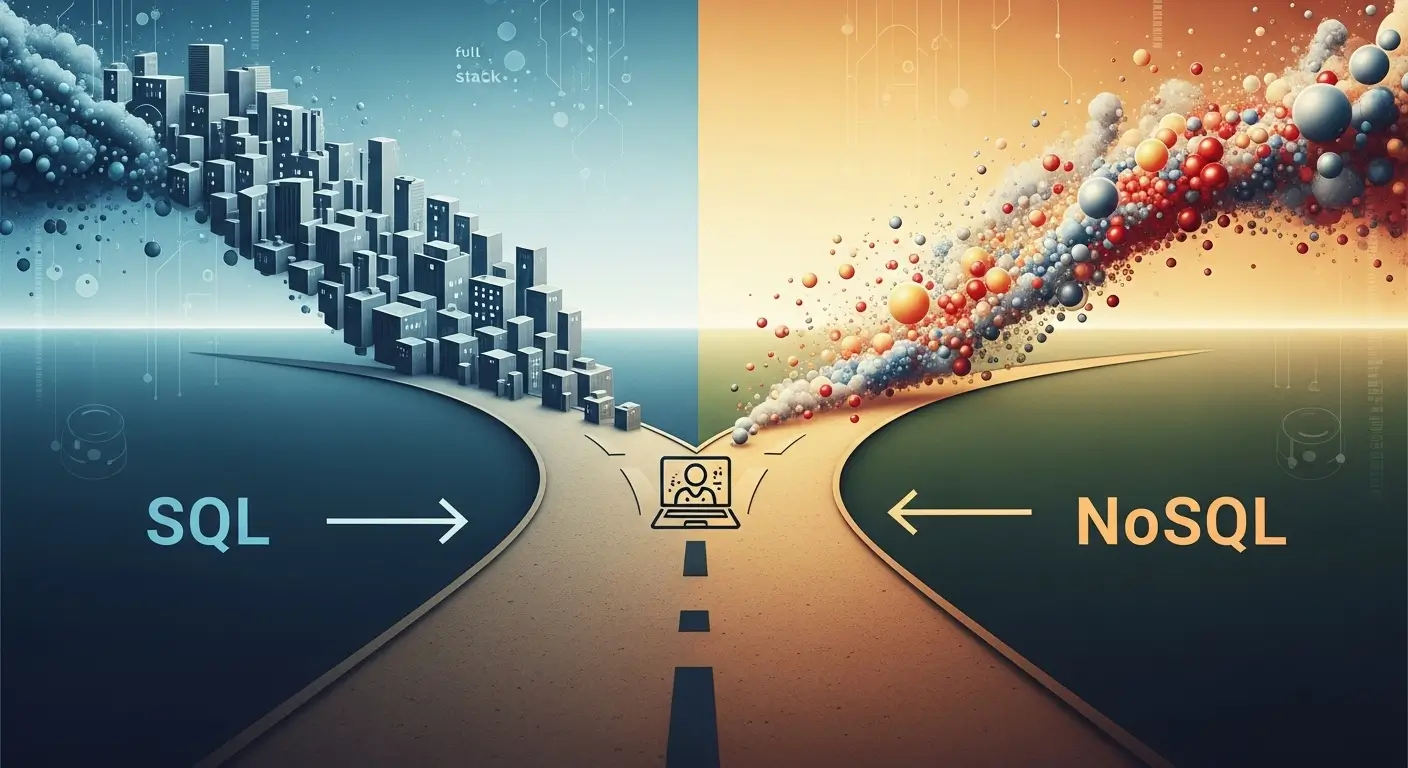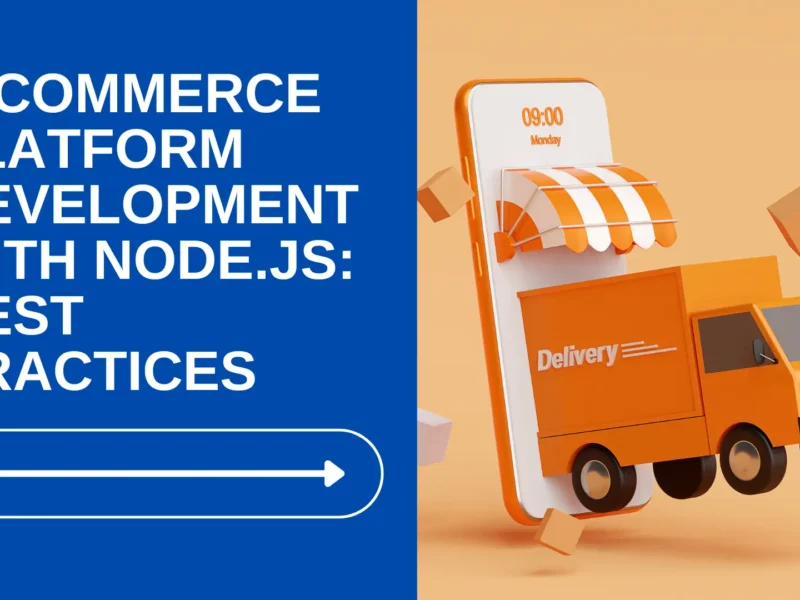Building a robust full-stack application requires a myriad of critical decisions, and perhaps none is as foundational as selecting the right database. This choice is particularly crucial for teams and businesses offering full stack development services, as the database serves as the bedrock of your application, influencing everything from performance and scalability to development speed and long-term maintainability. In the realm of full-stack development, the perennial debate often boils down to two major paradigms: SQL (Relational) and NoSQL (Non-Relational) databases.
This comprehensive guide will dissect the characteristics, strengths, weaknesses, and ideal use cases for both SQL and NoSQL databases. Our goal is to equip you with the knowledge needed to make an informed, strategic decision that aligns perfectly with your project’s unique requirements, ensuring your full stack application database choice sets you up for success.
Understanding SQL Databases
SQL, or Structured Query Language, databases have been the standard for managing data for decades. Often referred to as relational databases, they are built on a tabular structure, where data is organized into tables, rows, and columns, much like a spreadsheet. Relationships between these tables are defined using primary and foreign keys, allowing for complex data modeling and querying.
Key Characteristics of SQL Databases:
- Schema-on-Write: Before you can store data, you must define a rigid schema (table structure, data types, relationships). This ensures data consistency and integrity from the outset.
- ACID Compliance: SQL databases typically adhere to the ACID properties:
- Atomicity: All parts of a transaction succeed or fail together.
- Consistency: A transaction brings the database from one valid state to another.
- Isolation: Concurrent transactions execute independently.
- Durability: Once committed, transaction changes are permanent.
- Structured Query Language (SQL): A powerful, declarative language used for defining, manipulating, and querying data. Its standardized nature means skills are often transferable across different SQL database systems.
- Vertical Scalability: Traditionally, SQL databases scale vertically, meaning you increase the capacity of a single server (more CPU, RAM, faster disk).
- Examples: PostgreSQL, MySQL, Oracle Database, Microsoft SQL Server, SQLite.
When SQL Shines Brightest:
- Data Integrity is Paramount: Applications like financial systems, e-commerce platforms (handling transactions), or healthcare records, where data accuracy and consistency are non-negotiable, benefit immensely from ACID compliance.
- Complex Relationships: If your data has intricate, well-defined relationships (e.g., a customer can have many orders, each order has many items, items belong to categories), SQL’s relational model excels at managing and querying these.
- Reporting and Analytics: SQL’s robust query language makes it ideal for complex analytical queries, reporting, and business intelligence, especially when data is structured and consistent.
- Predictable Data Structures: When your data schema is stable and unlikely to change frequently, the predefined structure of SQL databases provides stability and performance.
- Mature Ecosystem: SQL databases boast a vast ecosystem of tools, ORMs (Object-Relational Mappers), experienced developers, and well-established best practices.
Potential Downsides of SQL:
- Rigidity: The fixed schema can be cumbersome for rapidly evolving applications or when dealing with unstructured data. Schema changes often require downtime or complex migrations.
- Scaling Challenges: While modern SQL databases have improved horizontal scaling capabilities, traditional vertical scaling can become a bottleneck and is often more expensive for massive loads compared to NoSQL alternatives.
- Handling Unstructured Data: SQL is not inherently designed for handling large volumes of unstructured or semi-structured data like JSON documents or complex nested objects without significant workarounds.
Understanding NoSQL Databases
NoSQL, standing for “Not Only SQL,” databases emerged as a response to the limitations of traditional relational databases, particularly concerning the demands of modern web applications: massive scale, agility, and handling diverse data types. Unlike SQL databases, NoSQL databases do not adhere to a rigid tabular schema and offer greater flexibility in data storage.
Key Characteristics of NoSQL Databases:
- Schema-on-Read (Schema-less): Data can be stored without a predefined structure. The schema is implied or enforced by the application when data is read, offering incredible flexibility for rapidly evolving data models.
- BASE Consistency: Many NoSQL databases prioritize availability and partition tolerance over strict consistency, adhering to the BASE principles:
- Basically Available: The system guarantees availability for clients, meaning partial failures don’t stop the entire system.
- Soft State: The state of the system may change over time, even without input.
- Eventually Consistent: Given enough time, all data replicas will eventually converge to the same consistent state.
- Horizontal Scalability: NoSQL databases are designed for horizontal scaling (sharding or clustering), distributing data across many servers. This allows them to handle massive volumes of data and traffic.
- Diverse Data Models: NoSQL is an umbrella term encompassing several distinct database types, each optimized for different data structures and use cases:
- Document Databases: Store data in flexible, semi-structured documents (e.g., JSON, BSON). Ideal for content management, user profiles, catalogs. Examples: MongoDB, Couchbase.
- Key-Value Stores: Simple, highly performant databases that store data as key-value pairs. Ideal for caching, session management. Examples: Redis, DynamoDB.
- Column-Family Stores: Store data in columns and column families, optimized for very large datasets and high write throughput. Ideal for analytics, time-series data. Examples: Cassandra, HBase.
- Graph Databases: Store data as nodes and edges, representing relationships directly. Ideal for social networks, recommendation engines, fraud detection. Examples: Neo4j, ArangoDB.
When NoSQL Excels:
- Massive Scalability and High Availability: For applications requiring the ability to scale horizontally to handle millions of users or terabytes of data (e.g., social media platforms, IoT data streams), NoSQL is the go-to choice.
- Flexible and Evolving Schema: Perfect for agile development, rapid prototyping, and applications where the data model changes frequently or is unpredictable.
- Handling Unstructured/Semi-structured Data: Ideal for storing diverse data formats like user-generated content, logs, JSON objects, or multimedia files.
- High Performance for Specific Workloads: Certain NoSQL types (e.g., Key-Value stores for caching) offer incredibly low latency for specific read/write patterns.
- Global Distribution: Many NoSQL databases offer built-in support for distributed data across multiple geographical regions, improving latency and availability.
Potential Downsides of NoSQL:
- Less Mature Ecosystem (historically): While rapidly maturing, some NoSQL types may have fewer established tools, ORMs, or community support compared to SQL.
- Complex Queries: Joining data across different collections or tables can be more complex or less performant than in SQL databases, often requiring application-level logic.
- Data Consistency Trade-offs: The BASE model means that immediate consistency is often sacrificed for availability and partition tolerance, which might not be suitable for all transactional applications.
- Learning Curve: The diversity of NoSQL models means that expertise gained in one type (e.g., Document DBs) might not directly translate to another (e.g., Graph DBs).
Key Factors for Choosing Your Full Stack App Database
The “best” database for your full stack app isn’t about SQL versus NoSQL; it’s about the right tool for the right job. Consider these critical factors:
- Data Structure and Relationships:
- Highly Structured, Interconnected Data: If your data inherently fits into tables with clear, complex relationships (e.g., orders, customers, products), SQL is a natural fit.
- Flexible, Semi-structured, or Unstructured Data: If your data is varied, evolves frequently, or doesn’t have a fixed schema (e.g., user preferences, sensor data, product catalogs with varying attributes), NoSQL’s flexibility is a significant advantage.
- Scalability Requirements:
- Predictable Growth, Vertical Scaling sufficient: If your application is expected to grow incrementally and can be managed by scaling up a single powerful server, SQL might suffice.
- Massive, Unpredictable Growth, Horizontal Scaling Needed: For applications anticipating exponential growth, high traffic, or needing global distribution, NoSQL databases designed for horizontal scaling are superior.
- Data Consistency and Integrity:
- Strict ACID Compliance Required: For financial transactions, inventory management, or any scenario where every single operation must be fully consistent and durable, SQL’s ACID guarantees are crucial.
- Eventual Consistency Acceptable: If your application can tolerate slight delays in consistency for the sake of higher availability and performance (e.g., social media feeds, content delivery), NoSQL’s BASE model is suitable.
- Development Speed and Flexibility:
- Rapid Iteration, Agile Development: NoSQL’s schema-less nature allows developers to quickly iterate on data models without costly migrations, accelerating development cycles.
- Stable Schema, Long-term Consistency: If your data model is well-defined from the start and changes are infrequent, SQL provides stability and predictable behavior.
- Performance Needs:
- Complex Ad-Hoc Queries: SQL’s powerful query language is excellent for running complex joins and analytical queries across structured data.
- High Read/Write Throughput for Specific Patterns: NoSQL databases often excel in specific performance scenarios, like lightning-fast key-value lookups, high-volume writes (e.g., time-series data), or specific graph traversals.
- Team Expertise and Ecosystem:
- Existing SQL Expertise: If your development team is already proficient in SQL, leveraging that knowledge can significantly reduce the learning curve and accelerate development.
- Exploring New Technologies: If your team is open to learning and the project demands the strengths of NoSQL, embracing it can open new architectural possibilities. Consider the availability of tools, drivers, and community support for your chosen database.
- Cost:
- Consider not just licensing (many are open source) but also operational costs, infrastructure requirements (number of servers), and the complexity of managing a distributed system.
When to Choose SQL for Your Full Stack Application
- E-commerce Platforms: Handling orders, payments, user accounts, and inventory where transactional integrity is non-negotiable.
- Financial Applications: Banking, trading systems, accounting software requiring strict adherence to ACID properties.
- Content Management Systems (Traditional): Storing structured article data, user roles, comments where relationships are well-defined.
- Enterprise Resource Planning (ERP) Systems: Managing complex interdependencies between departments, processes, and data.
- Applications with Complex Joins: Where data from multiple related tables needs to be frequently queried together.
When to Choose NoSQL for Your Full Stack Application
- Big Data Applications: Storing and processing massive volumes of data from various sources (e.g., IoT sensor data, web analytics).
- Real-time Applications: Gaming, live chats, real-time analytics dashboards requiring high throughput and low latency.
- Social Networking Apps: Managing user profiles, friend connections (Graph DBs), activity feeds, and rapidly changing user data.
- Content Management Systems (Modern/Large Scale): Storing diverse content types, user-generated content, and rapidly evolving content schemas.
- Mobile App Backends: Often benefit from flexible schemas and easy horizontal scaling to support a large number of users.
- Caching and Session Management: Key-value stores like Redis are perfect for fast, temporary data storage.
Can You Use Both? The Polyglot Persistence Strategy
The answer is a resounding yes! A growing trend in full stack app database architecture is “Polyglot Persistence,” where different database types are used for different parts of an application based on their specific strengths.
For instance, an e-commerce platform might use:
- PostgreSQL (SQL): For critical transactional data like orders, payments, and user accounts, leveraging its ACID compliance.
- MongoDB (NoSQL Document DB): For product catalogs (where product attributes can vary widely) and user-generated content like reviews, benefiting from its flexible schema.
- Redis (NoSQL Key-Value Store): For caching frequently accessed data and managing user sessions, for blazing fast performance.
This approach allows you to optimize each component of your application with the database technology best suited for its particular data type and access patterns, leading to a more performant, scalable, and resilient system.
Conclusion: Making the Right Database Choice
There’s no universal “best” database. The decision between SQL vs. NoSQL for your full stack app database hinges entirely on your project’s unique requirements. Carefully evaluate your data’s structure, anticipate your scalability needs, understand your consistency demands, and consider your team’s expertise.
SQL databases remain the gold standard for applications demanding strict data integrity, complex transactional processes, and intricate relationships. NoSQL databases, with their diverse models, offer unparalleled flexibility and horizontal scalability, ideal for handling massive, dynamic, and unstructured data.
By thoroughly analyzing these factors, you can confidently select the database paradigm – or even a combination of both – that will empower your full-stack application to thrive and evolve successfully, a critical consideration for any provider of web development services.



